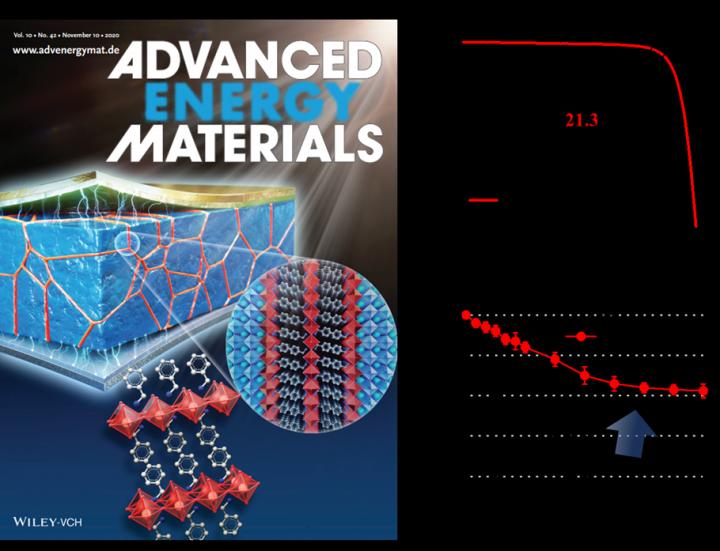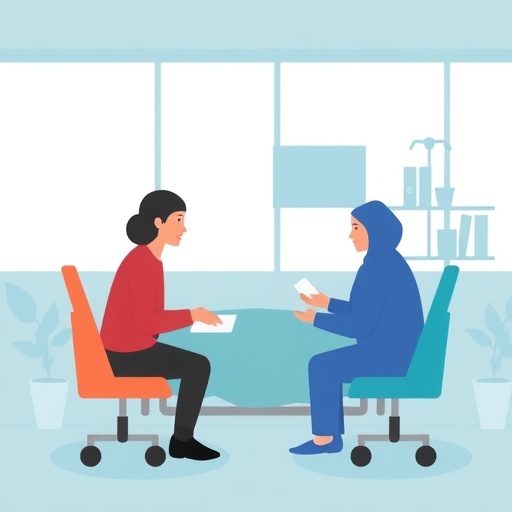
Credit: POSTECH
Perovskite solar cells are attracting attention as the next-generation solar battery material thanks to their low processing cost and excellent photovoltaic quality. However, it is difficult to commercialize them because their key material – perovskite – is vulnerable to light and moisture.
Recently, a POSTECH research team has developed an organic spacer molecular additive that can improve both the photoelectric efficiency and stability of perovskite.
A POSTECH research team led by Professor Kilwon Cho and Ph.D. candidate Sungwon Song of the Department of Chemical Engineering has succeeded in fabricating perovskite solar cells that are highly efficient and stable by drastically reducing the concentration of internal defects in the crystals as well as increasing the moisture resistance of perovskite by introducing a new organic spacer molecule additive in the perovskite crystal. The study was published as a cover paper in the latest issue of Advanced Energy Materials, one of the most authoritative journals in the field of energy.
By adding organic spacer ions to solve the problem, the research team developed a hybrid perovskite photovoltaic layer where two- and three-dimensional perovskite coexist. Organic spacers create two-dimensional perovskite structures on the surface of 3D perovskite crystals. These structures act as stabilizing layer that increases resistance to moisture due to its property of repelling water.
In addition, it was discovered for the first time that this newly introduced organic spacer minimizes mechanical stress of the two- and three-dimensional perovskite crystal interfaces, thus promoting the nuclear production and growth of the 3D perovskite crystal. As a result, the internal defects of the photoreactive layer – the 3D perovskite crystals – have been dramatically reduced.
The solar cells developed by the research team achieved 21.3 % efficiency and secured moisture stability to maintain more than 80% of their initial efficiency even after 500 hours under 60% of relative humidity conditions.
“This study has presented a new perspective on organic spacer molecular design for the realization of high performing and stable perovskite solar cells,” remarked Professor Kilwon Cho who led the study. He added, “It is anticipated to be a source technology that can contribute to the commercialization of perovskite solar cell technology.”
###
The research was conducted with the support from the Center for Advanced Soft Electronics under the Global Frontier Research Program of the Ministry of Science and ICT of Korea.
Media Contact
Jinyoung Huh
[email protected]
Original Source
http://postech.
Related Journal Article
http://dx.




